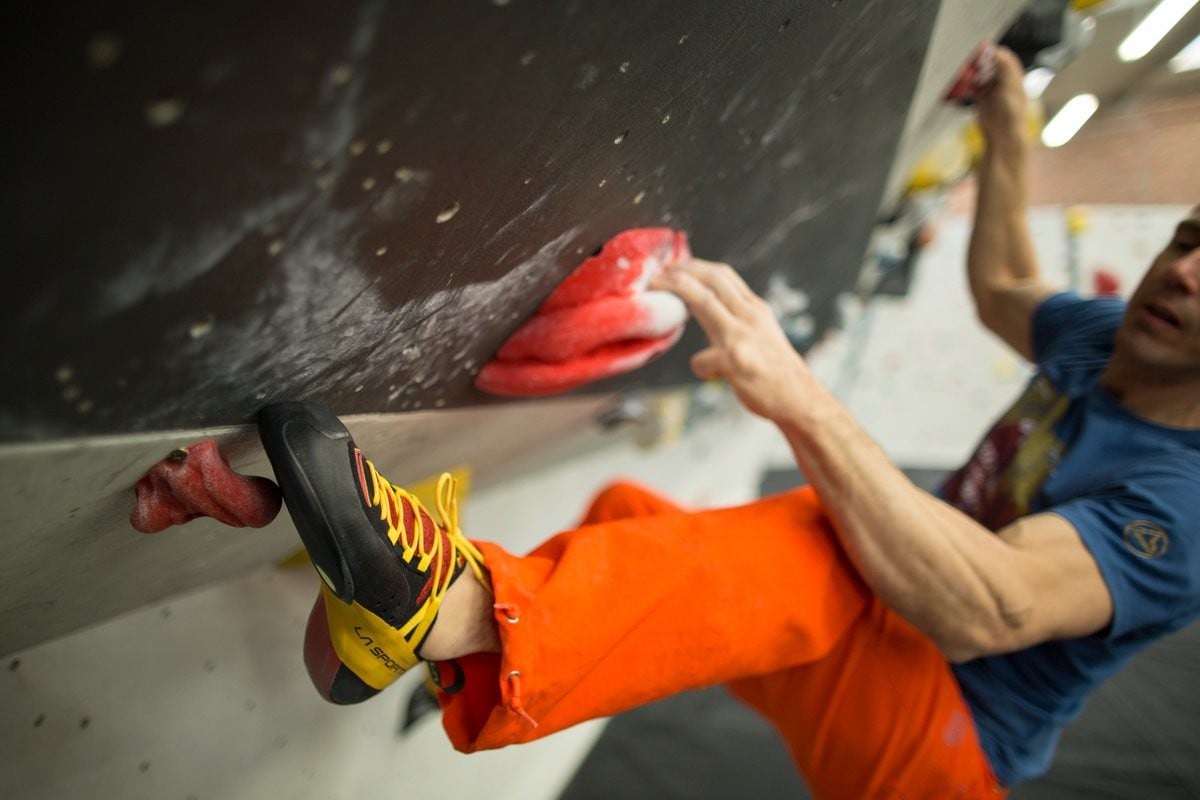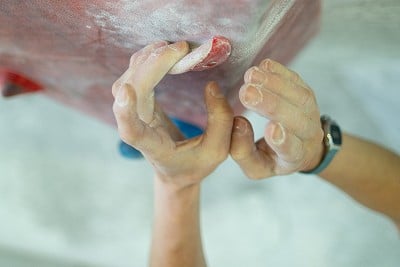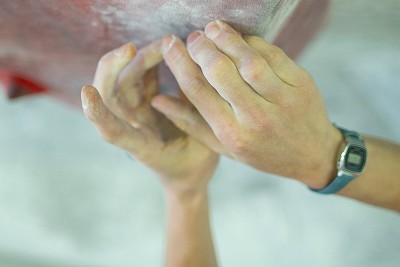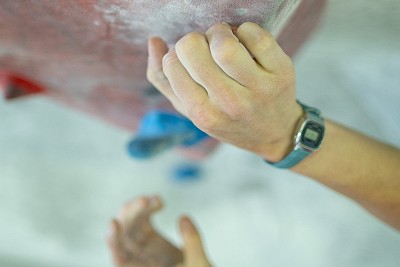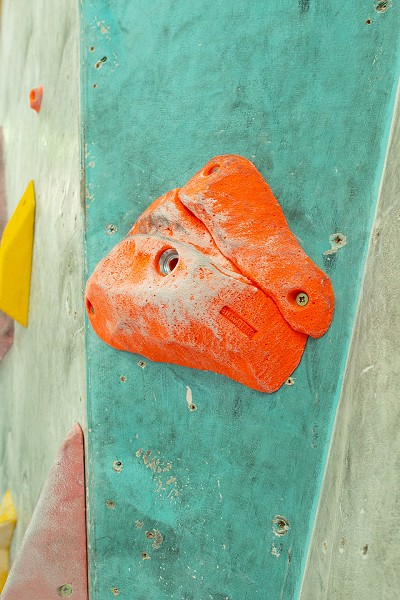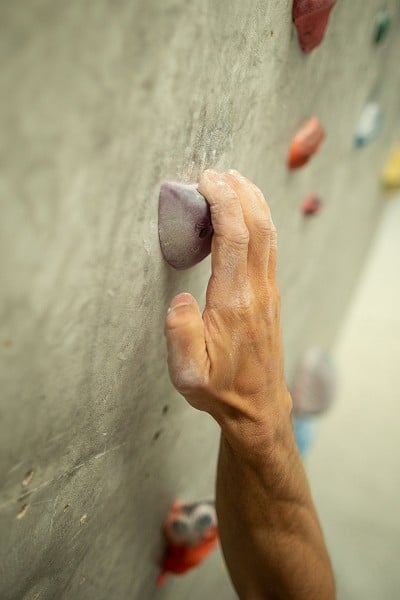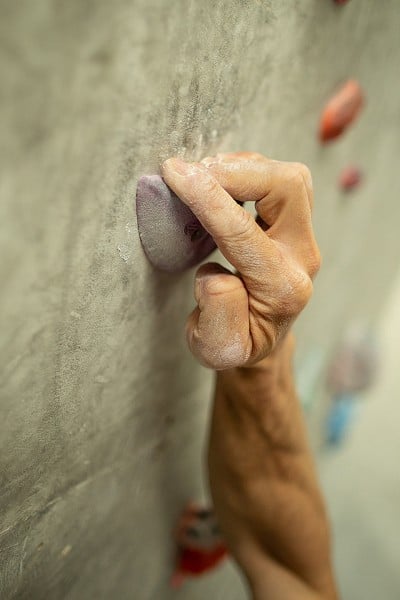Handholds and Grip Technique - Part 3
When planning this series, I completely underestimated how much space would need to be devoted to grip technique. Sure enough, the first article was taken up by the different methods for holding edges, the second was focused on other holds (slopers, pockets, pinches and so on) and now it's time for the remaining micro-tips that can help us to make crucial energy savings when using handholds.
Before we start, there's something I would like to share. Whilst trying a long endurance-based sport route recently, I really noticed myself dragging on edges and using my thumb more than usual in order to lighten the load and reduce the pump. I'm convinced that this is because I've been writing these articles and the relevant techniques are in the forefront of my mind. To me, this highlights just how much there is so much to remember when it comes to climbing techniques and how it is helpful to write checklists and review them regularly.
Swapping hands
Swapping hands is easy on wide holds, but what if there is barely enough room for one hand, let alone two? Hard hand-swaps often feel awkward, tenuous and sometimes stressful on the finger tendons, so it pays to treat them with precision and focus. First, place your feet with maximum accuracy and consider shifting your body position, for example, lean to the side or centralise your hips in order to get as much weight on your feet as you can. The main point is not to be too 'greedy' with your first hand in order to maximize the available space on the hold for the second hand. This always feels counterintuitive as you must virtually risk falling off in order to do so. Try to make it a controlled, calculated procedure rather than a desperate fumble!


Reading the holds
A key skill to develop is the ability to identify the best part of the hold by eye rather than relying too much on feel, especially when climbing on rock, as this will help you to save time, energy and skin. Of course, you will improve at this naturally with experience; however, in the short term you can speed up the process if you work on it consciously. It was Steve McClure who first told me a useful tip:
"Be strict with yourself when onsighting routes and resist the obvious temptation to rush straight to the hold. Instead, make a quick visual assessment then try to go straight for the best part of the hold rather than feeling your way into it."
Steve McClure

Note that 'hold fumbling' can become a chronic and engrained nervous habit if left unchecked! Route-reading (from the floor) is a valuable supportive tactical procedure to help reduce the amount of faffing. The aim is to change your perspective and view from close in, far back and from both sides, as this may reveal crucial in-cut sections of holds that you would otherwise have missed.
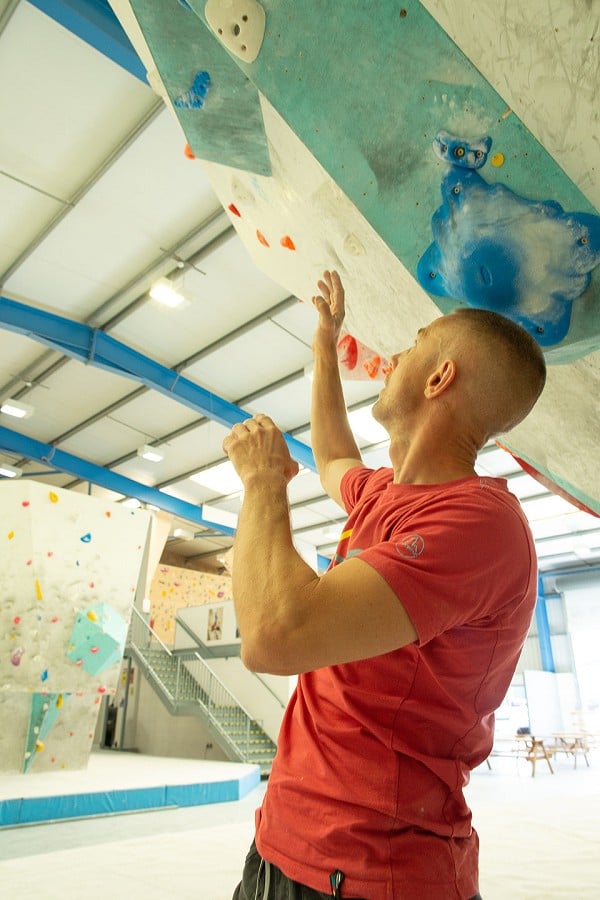
Grip re-adjustment
How many times have we caught ourselves udging incessantly into the depths of holds as if trying to dig holes in the back of them? Clearly, excessive grip re-adjustment is another one of those nervous technique habits that can spiral out of control if it's not kept in check. The question is 'how much readjustment is too much'? Coaches may disagree on this but as a rule of thumb, if you are re-adjusting two or three times on most moves then this would constitute a major fault that needs prioritising, whereas if you readjust once every two or three moves then the fault is relatively minor. One quick re-adjustment every 5 or 6 moves is fine and to be expected unless you're Adam Ondra who may never have readjusted on a hold in his life! In addressing major faults, note that excessive grip-adjustment is often the manifestation of a fear of falling or a lack of confidence in overall technique or strength. As such, the only way to make a reliable fix is to look at every possible link in the chain and not just at the gripping component. The answer is to rewind, drop the grade and spend time rebuilding your technique on easy ground and/or taking regular leader fall practice.

On the flip side, if you never re-adjust your grip then this is either a sign that you are generally confident and good at finding the best part of holds, or conversely, that you are blindly missing those key moments when a quick re-adjustment would be hugely beneficial! At this point, we link back to the previous solution of simply having this issue on your radar and trying to hone a 'sixth sense' for whether grip re-adjustment is necessary and to rely more on sight for this process rather than feel.
Over-gripping unmasked
So-called 'over-gripping' is perhaps one of the most common ways that climbers waste energy, with most of us tending to hang on way harder than we need to by default, especially when we're scared! As such over-gripping shares parallels with excessive grip re-adjustment in the sense that a chain of causal factors is usually responsible (fear of falling or failing, lack of trust in the feet and so on) and also, the challenge is telling if/when we are doing it and whether a fault is minor or major. Some context here: if you are running it out above RPs on a bold trad route then over-gripping is probably a healthy thing (unless the rock is loose). However, if you appear to be attempting to rip every hold off the panel when leading indoors then this should be addressed as a matter of priority.
Again, be honest with yourself and there is no point looking purely at gripping methodology if you aren't prepared to address the underlying causes. Once you're sure that it is purely the gripping component that needs attention, it's often simply the case of reminding yourself as you climb to use as little grip-strength as possible. No surprise, most climbers find that they instantly make huge energy savings when they do this!
To combat over-gripping, try to deploy a more passive gripping style. Use the open/drag grip and 'chisel grip' (pictured) as much as possible on edges. When using larger holds, drag your pads over the holds and rely more on friction.
Remind yourself to breathe and relax! You won't be able to do this when climbing at your limit unless you can do it effectively on easy terrain first, so warm-up climbs provide the classroom.
To reduce the likelihood that over-gripping is being caused by excessive muscle tension, stretch your forearms regularly but only on rest days and after climbing and never before or during climbing sessions.


Another useful ploy to combat over-gripping is to spend more time redpointing as this teaches us to grip holds minimally and efficiently, whereas we are often prone to squandering grip-strength when onsighting.
If climbing technique is now starting to feel like a giant sieve, then hopefully these articles are doing their job! Don't get overwhelmed. Pick out individual areas to focus on and to rotate them regularly. With this approach, not only will you become a much better climber in the long-term, but your sessions will be more fun and varied too.
With special thanks to Boulder UK Preston and Depot Climbing, Manchester.
Steve McClure is sponsored by Marmot, Petzl and 5.10.

Neil Gresham is widely regarded as one of the world's leading voices in performance coaching for climbing. He has been coaching and writing regular training articles for national magazines since 1993 and has pioneered many of the methods that are used widely by coaches today. Neil is the current training columnist for UKClimbing.com and Rock & Ice in the USA.
He has climbed E10 trad, WI 7 on ice and in 2016 he climbed his first 8c+ at the age of 45 when he made the first ascent of Sabotage 8c+ at Malham Cove. Neil puts all his successes down to hard work, motivation and refinement of his game. He believes that work and family commitments don't need to limit our climbing goals provided we are focused and make the best possible use of our training time.
Key components of Neil's training programmes
- All programmes are based on response to a detailed questionnaire and are aimed at the ability level, weaknesses, strengths, goals and lifestyle constraints of each individual.
- Programmes can also be based on the results of optional benchmarking tests. See 'benchmarking' on this site.
- Programmes can be for all-round performance or geared towards different climbing styles: bouldering, sport, trad or competitions. They can also be targeted towards goals, weaknesses, trips or projects.
- You can choose between a full training programme (which includes all aspects of training) or a 'fingerboard-only' training programmes. Fingerboard programmes include advice on how to fit the sessions in with other climbing and training.
